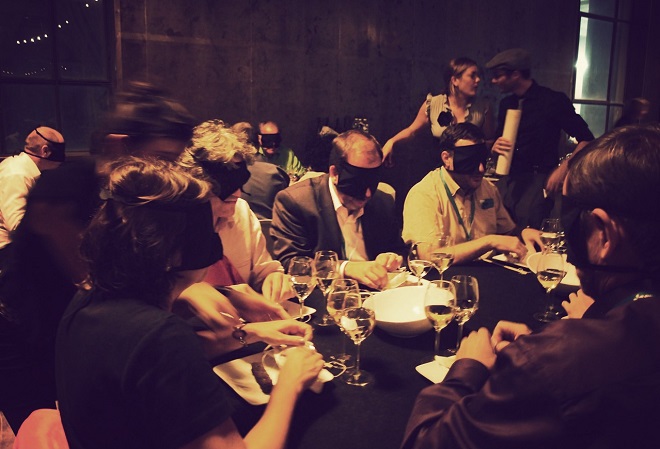

Consultante éditoriale, Sophie Lecomte aide les PME à attirer plus de clients et augmenter leurs revenus sur Internet.
What is sensory marketing?
Sensory marketing consists of a set of techniques for stimulating one or more of the five senses to incite a consumer to react or purchase.
Can’t see what exactly sensory marketing is? In reality, we are surrounded by it every single day:
- Supermarkets play upbeat music to encourage us to shop enthusiastically and give in to impulsive buying.
- Fresh bread and pastry aromas near to sales outlets in the street or in shopping malls attract us to bakeries or fast food restaurants (coffee and a croissant on the way to work in the morning).
- Tasting samples in a supermarket aisle is none other than gustatory marketing…
- The choice of colours in a given universe (clinical white at the opticians, red and black at Sephora).
- In certain “nature” shops, you immediately know where you are thanks to the sounds of nature and the use of scents.
In other words, gustatory, auditory, visual, tactile and olfactory marketing are all used to arouse powerful emotions in people.
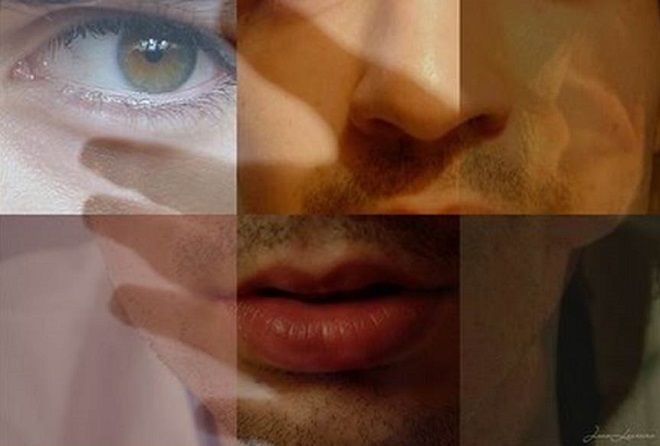
There are countless examples of brands that adopt sensory marketing techniques, and in all sectors of activity, from public transport to luxury goods (perfumes, high-end cosmetics, hotels).
How does this concern you, the restaurant manager?
By stimulating one or more senses, you can influence your customers’ feelings, emotions and behaviour. For example, the choice of music you play will partly determine customers’ pace of consumption (slow, fast, romantic, fun, seasonal). Will they take their time and linger over their romantic dinner by ordering more wine? Or do you want to encourage impulsive buying for meals served quickly and for a large number of place settings?
The tempting smell of freshly baked pizza floating down the street is likely to win over many of those who pass by your restaurant. And for good reason: a given scent can trigger up to 755 emotions!

“Eau de Toast”, an eau de toilette launched by Britain’s Federation of Bakers at the 2013 London Fashion Week!
Beyond simply attracting or triggering the purchase, sensory marketing also allows you to make your restaurant more easily identifiable and memorable.
If you manage a chain of franchises and want to offer the same experience in all your outlets, adopt the Starbucks model: the smell of freshly prepared coffee and the music playlists are the same worldwide, and help customers to immediately identify the brand, no matter their nationality.
With a particular scent, a certain sound environment or specific materials, your restaurant will make a lasting impression on the customer’s imagination.
Going out for a meal in a restaurant is about much more than just “eating”: it represents an experience that you can render unique to attract customers, leave a lasting mark on them and ensure their loyalty.
In other words, if your awaken their senses pleasantly and in a unique manner, they are likely to come back for more…
What market research reveals and how to use it:
- The slower and more soothing the music, the more people eat. The faster and more upbeat the music, the more quickly people eat. This is valid in all sectors of activity (Mowen and Minor, “Consumer behavior”, 2000).
- The enjoyment of a meal (and the time taken to enjoy it) is influenced by the weight and thickness of the cutlery and glasses, the material of the napkins or the comfort of the chairs.
- Red is a colour that simulates people’s appetites (John, 2007)
- The shape of the plate influences the perception of the dish (source)
Does it work?
The answer is yes! Sensory marketing represents a considerable growth enabler:
- It enhances recognition of your establishment and your brand
- It increases customers’ pleasure and enjoyment, which in turn increases their average buy
- It makes your restaurant unforgettable
- It increases your visibility (word of mouth, social networks)
- It is easily relayed in the media (newspapers, specialized websites)
The most renowned restaurants are fully booked several months in advance for an average bill of between 350 and 1,000 euros!
When the five senses become a consumption experience of their own: four examples of restaurants that have successfully converted the try
In most industries, sensory marketing looks to influence consumers, determine their pace of action, and create an environment specific to the brand (so-called sensory branding). With restaurants, whether traditional, family-oriented or even gourmet, the situation is slightly different: the senses become an experience in their own right.
1. Concerning experiences, renowned chef Heston Blumenthal is worthy of mention.
In his restaurants, he offers unique and sometimes astonishing experiences in visual, gustatory, olfactory and even auditory terms.
For example, when you order a platter of seafood, your dish is accompanied by an MP3 player hidden in a shell. The idea is to allow patrons to hear the sound of breaking waves and thus enhance their oceanic journey so that they can savour their seafood even more.
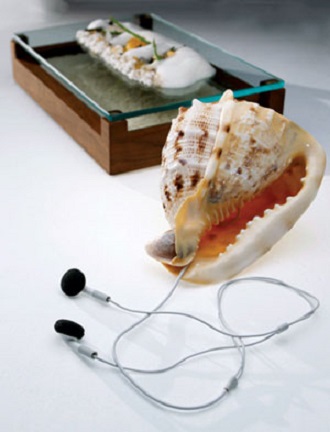
2. In Ibiza, Sublimotion has become the most expensive restaurant in the world by offering a multi-sensory experience.
See the concept for yourself in this video clip:
By combining his dishes with a digital environment that changes along with the meal, Michelin-starred chef Paco Roncero sets out to awaken his patrons’ senses and bring back to life forgotten memories. Fear, laughter, pleasure, nostalgia… the room itself is used to help convey certain emotions that go with the dish, for example by recreating the North Pole or the Palace of Versailles.
3. He is not the first one to have done this: in Shanghai, Paul Pairet’s Ultraviolet restaurant is fully booked months in advance!
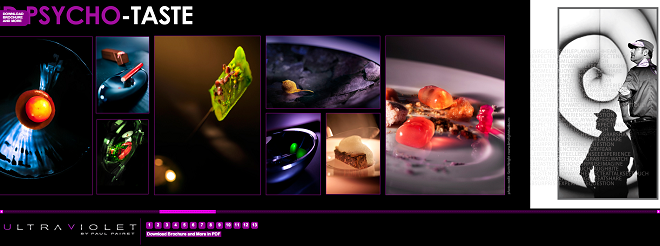
source: screen capture from the website of restaurant Ultraviolet
4. Another approach is to do quite the opposite, by depriving the customer of one of his or her senses. The chain of restaurants Dans le noir ? successfully took up this challenge. Patrons are invited to enjoy a surprise dinner in complete darkness, served only by blind and visually impaired people.
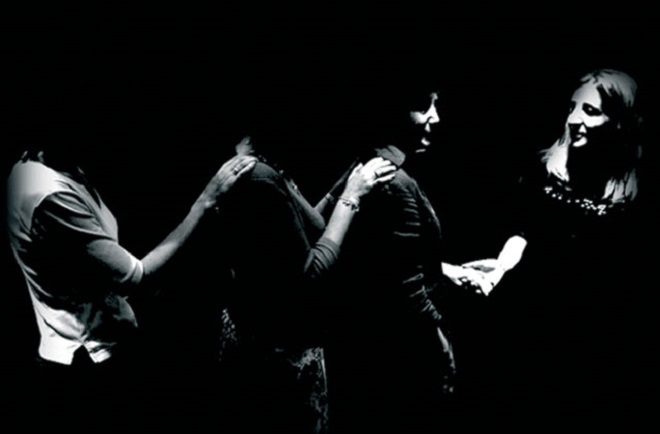
Being deprived of a sense (in this case, one’s sight) effectively enhances the other senses, resulting in an extraordinary eating experience.
Some avenues to explore for your restaurant

While offering this kind of highly-developed concept might not be appropriate for your establishment, you can nevertheless make sensory marketing work for you at your own particular level:
- Lay on tasting events or let passers-by in front of your restaurant taste some samples of your food (your flagship products, mini-pizza slices, etc.).
- If your dining area does not have any particular scents or cooking aromas, try out different interior fragrances to find the one that best matches your restaurant’s identity.
- Think carefully about the choice of music you play in your restaurant.
- Check that the materials you employ (napkins, chairs, cutlery) correspond with the experience sought by your guests.
In short, catering to your guests’ five senses means giving consideration to the entire eating experience, not merely what you put on the plate. No doubt you already do this to a certain extent: if your restaurant offers a romantic setting, it is more than likely that you use subdued lighting and play soft music!
Do you have any ideas or experiences that you would like to share on this subject? By all means tell us!


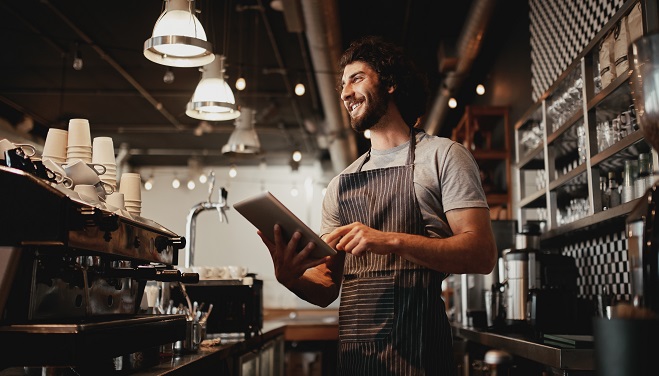


Comments